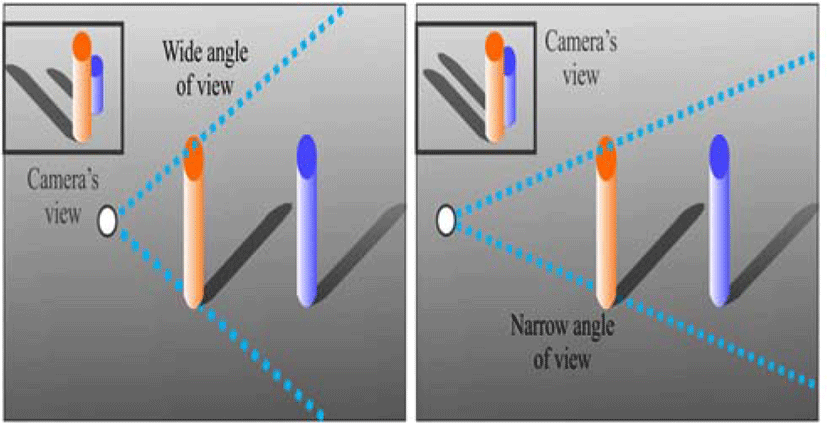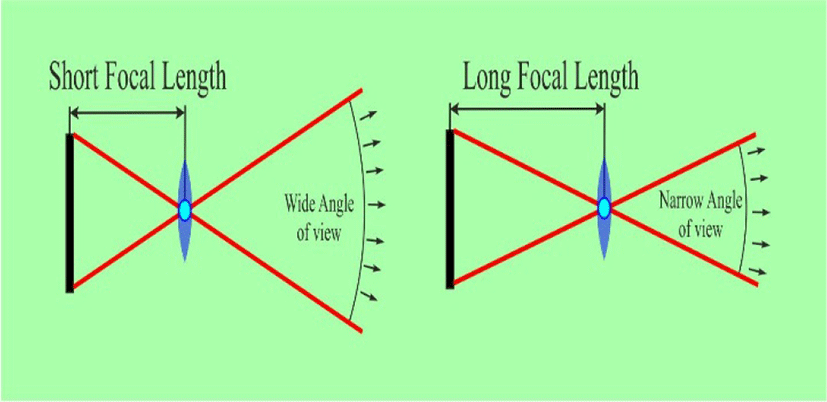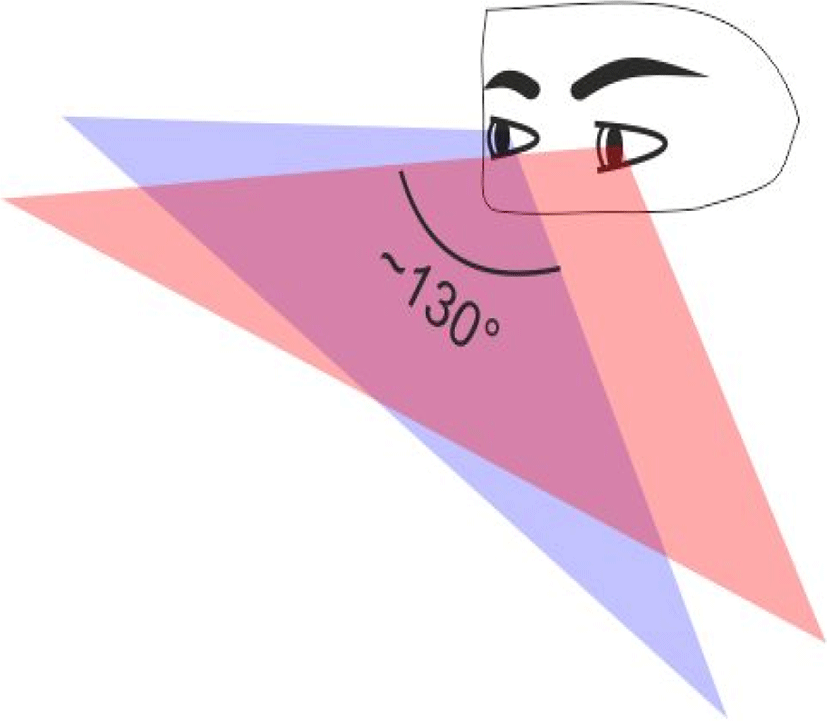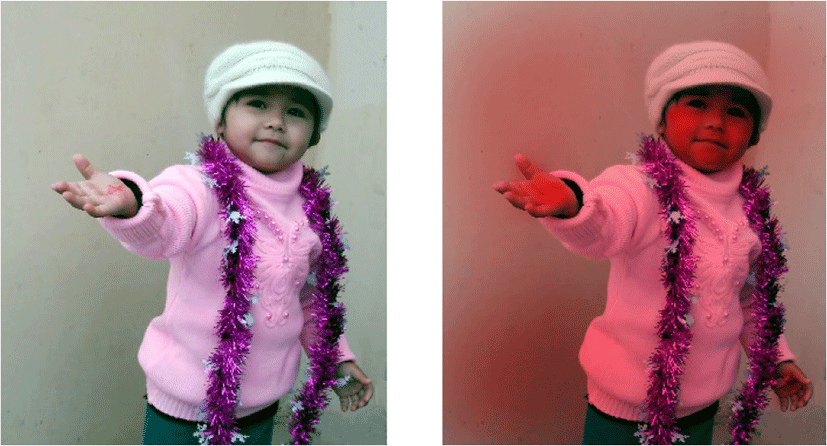I. INTRODUCTION
Our eyes are able to cast a glance on what is happening and act dynamically depending on the subject, while a camera records a single still image. Most people believe this is the main advantage of the eye over the camera. For example, our eyes are able to compensate for the imbalance in the brightness of different subjects, can look around to get a wider angle of view, and can focus on objects at different distances.
However, the result is similar to most camcorders (not cameras) because our consciousness collects several opinions in a mental image. A quick glance of our eyes would be a fairer comparison, but ultimately the uniqueness of our visual system is irrefutable because of the following:
What we are seeing is a mental reconstruction of objects based on images provided by the eyes - our eyes do not actually see independently.
II. ANGLE OF VIEW
For cameras, the angle of view is determined by the focal length of the lens and the size of the sensor. For example, the focal length of a telephoto lens is greater than that of a standard portrait lens, but because of that the angle of view is smaller:
Unfortunately, it is not so simple to understand vision through our eyes. Although the focal length of the human eye is approximately equal to 22 mm, this figure may be misleading, since the fundus rounded, the periphery of our field of vision, is less detailed than the center. Besides, what we see is the combined result of the two eyes.
Each eye has a separate view angle on the order of 120-200°, depending on the closeness of the objects defined as “observed”. Accordingly, the overlapping area of the two eyes is about 130° - almost as broad as that of a fisheye lens. However, for evolutionary reasons, our peripheral vision is only suitable for detecting movement and large objects (such as a lion pouncing from your side). Moreover, such a wide angle would have looked very distorted and unnatural, if captured by a camera.
Our central angle of view - on the order of 40-60° - has the greatest effect on our perception. Subjectively, it is related to the angle within which you will be able to remember objects without moving the eyes. Incidentally, this is close to the corner of a “normal” lens with a focal length of 50 mm (if not accurately, then 43 mm) on a full frame camera or 27 mm camera with a crop factor of 1.6. Although this does not share the full angle of our vision, it conveys well the way we see, achieving the best compromise between the different types of distortion:

If you will make the angle of view too big, the difference in size of objects would be exaggerated, but with too narrow an angle of view makes the relative sizes of the objects almost identical, and loses a sense of depth. Extremely wide angles also lead to stretched objects near the edges of the frame.
For comparison, despite the fact that our eyes produce distorted wide-angle images, we reconstruct it in a mental image in which there are no distortions.
III. DISCERNIBILITY and DETAIL
Most modern digital cameras have 5-20 megapixels, which is often touted as a complete failure as compared with our own vision. In fact, the ideal human eye is resolution equivalent to a 52-megapixel camera (taking the corners at 60°).
However, these calculations are misleading. Only our central vision may be perfect, so that in fact we will never reach such a resolution at a glance. As the distance from the center of our vision increases, our visual abilities fall dramatically - so much so that only 20° from the center of our eyes we already distinguish only one-tenth of the original level of detail. At the periphery, we find only large-scale detail and low contrast colors:
Considering this, it can be argued that one look of our eye is able to differ details only comparable to the 5-15 megapixel camera (depending on the view). However, our mind does not really remember images pixel by pixel; it records notable detail, color and contrast for each image differently.
As a result, in order to recreate a detailed visual image, our eyes are focused on a few items of interest, quickly alternating them. Here is a visual representation of our perception:
For other important differences between the way our eyes differ to cameras in the details are as follows:
Each eye is able to perceive more detail below the line of sight, the higher the peripheral vision and with much more sensitivity in the direction of the nose. Cameras capture images are absolutely symmetrical in detail.
In very low light, such as lunar or stellar, our eyes actually begin to see in monochrome. In such situations, our central vision also becomes less vigilant than our vision slightly away from the center. Many astrophotographers are aware of this and benefit from the advantages of looking slightly away from dim stars if they want to see it with the naked eye.
Legibility of the smallest detail is often given too much attention, however small tonal gradations are also important - here our eyes and cameras differ the most. For a camera, greater detail always makes it easier to convey a picture - but to our eyes, though it may be contrary to intuition, increased detail can hinder vision. In the following example, both images contain the same texture contrast, but in the image to the right it is not visible because the level of detail was increased.
IV. THE SENSITIVITY AND DYNAMIC RANGE
Dynamic range is one of the characteristics for which the eye is often seen as having a huge advantage. If we consider the situation in which our pupil opens and closes to account for differences in brightness, then yes, our eyes are far superior to the possibilities of a single image (and can have a range in excess of 24 f-stops1). However, in these situations, our eyes adapt dynamically, as does the video camera, so this is obviously an unfair comparison.
If, instead, we estimate the instantaneous dynamic range of our eyes (at a constant width of the pupil), the camera fares a lot better. An analogy can be obtained by looking at one element of the scene, giving the eyes time to tune and not looking anywhere else. In this case, as a rule, say that our eyes can perceive dynamic range of the order of 10-14 f-steps—that absolutely covers most compact cameras (5-7 steps), but is surprisingly close to the capabilities of SLR cameras (8-11 degrees).
On the other hand, the dynamic range of our eyes depends also on the brightness and contrast of the object, so that the above is true only in normal daylight. In dim light of the star, our eyes can reach a much wider instantaneous dynamic range.
Sensitivity—this is another important visual characteristic that describes the ability to distinguish fuzzy or fast-moving subjects. In bright light, the modern camera cannot keep up with a relatively fast-moving object, as shown below in very unusual-looking results from fast shooting. It is, however, often possible for cameras with ISO sensitivity over 3200; equivalent ISO sensitivity to the human eye in daylight is assumed to be necessary.
However, in low-light, the sensitivity of our eyes increases substantially (if you give them at least an hour for adaptation). Astrophotography evaluates its range at ISO 500-1000; not as high as in digital cameras, but close. On the other hand, cameras have an advantage in that prolonged exposure means that they can detect still more faint objects, whereas our eye does not see any new details beyond anything longer than 10-15 seconds.
V. CONCLUSION
One could argue that arguments about whether the camera surpass vision are inconsistent because the camera requires a different standard: it needs to create a realistic-looking photograph. The printed picture does not know on what subjects the eyes will focus, so each part of the frame must be extremely detailed - in case it will attract attention. This is especially true for large or close range prints. It can be argued, however, that a comparative evaluation of the camera and the eye may be helpful.
In general, most of the benefits of our visual system stem from the fact that our consciousness is able to reasonably interpret the information transmitted by the eyes, whereas in the case of the camera all that we have is the result of the sensor. However, even in this case, modern digital cameras handle surprisingly well, and for some visual characteristics even surpass our eyes. A photographer who is able to intelligently collect a few pictures truly succeeds, surpassing even the image-reconstruction of consciousness.



